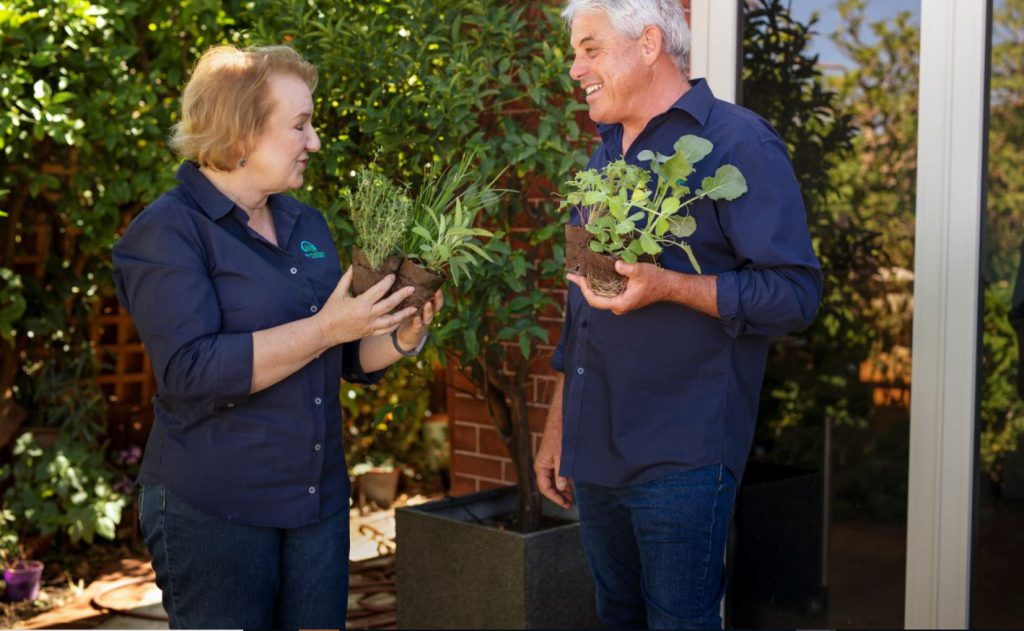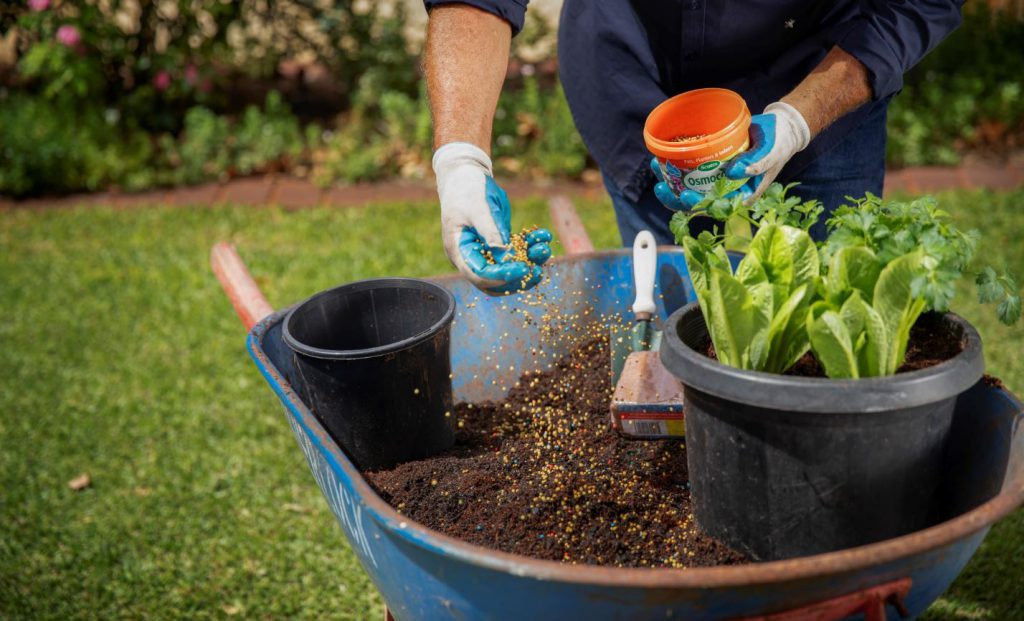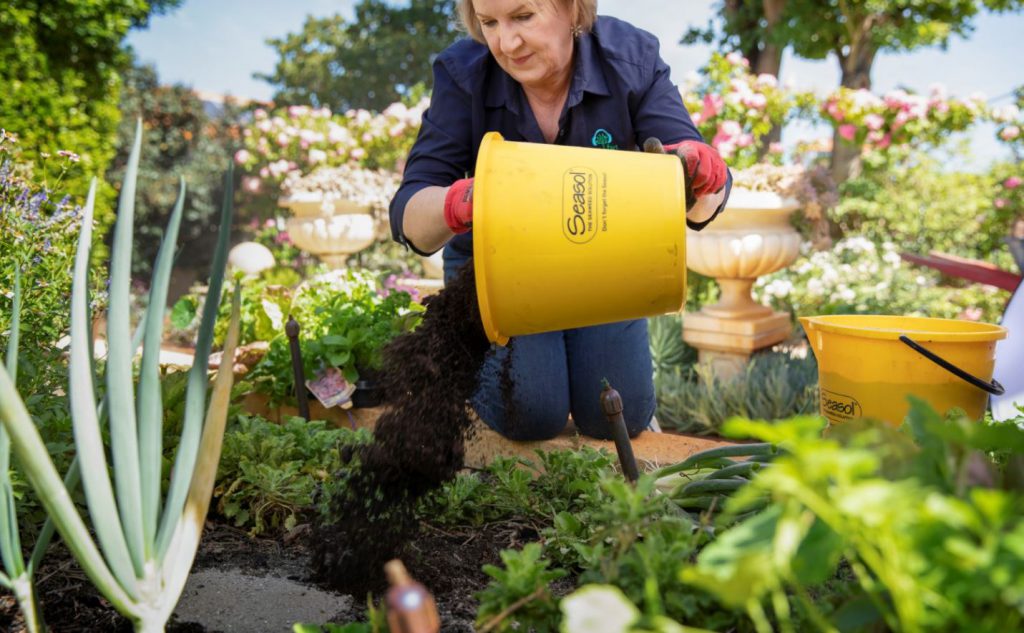Five steps for a thriving fruit and veggie patch | Homegrown Goodness
Sometimes our most rewarding experiences stem from our own backyard, and there’s nothing more satisfying than picking delicious home-grown ingredients from your veggie patch and making it shine in your kitchen.
Anyone with a balcony or garden can get into growing your own fruit and vegetables – you don’t need much space as most vegetables and all herbs can be grown in pots.
Just keep in mind edible plants won’t grow too well inside, but potted herbs can be brought indoors for a week, but prefer a mix of sun and shade outside.
Keen to get some home grown goodness going at your place? Here are five key tips to get you started.

Gardening with Deryn Thorpe and Steve Wood from the All The Dirt podcast
1. Improve the soil
It’s important to feed your garden so it can feed your family.
Healthy soil means healthy plants, so continuously improve your garden by adding clay to sandy soil and feed it regularly with compost, soil conditioner, dynamic lifter and complete fertiliser.
If your garden is nutrient-rich, your fruit and vegetables will transfer micro and macronutrients into your kitchen and onto your dinner plate.
2. The right mix for the right soil
Some of us are short on space or prefer gardening in pots over a garden bed.
If you’re growing in pots, fill them with a mix of potting mix and coco peat.
A great way to combine the right mix is in a wheelbarrow.
Mix a 25L bag of potting mix with five litres of hydrated coco peat and 150g (a handful or two) of slow release fertiliser.

Steve mixing three key soil improvement ingredients
3. The right conditions for healthy plants
Potted and garden plants should both be fed weekly with liquid fertiliser containing compost and seaweed.
Gardens love sunshine, but applying some shade also helps reduce evaporation and save on watering.
Most vegetables require at least half a day’s sunshine but appreciate a light shade cloth cover during summer.
Also keep in mind some herbs and vegetables – such as rosemary and asparagus – grow all year round.
Others – like tomatoes, corn and capsicum – flourish in the warmer months while kale, peas and broccoli thrive in cooler weather.
4. Know what grows best in our climate
Beginners should start out with easy and productive plants like silverbeet, rainbow chard and kale, which grow best in cooler months.
All vegetables grow easily from seed, but you can save a few weeks’ wait by purchasing vegetable seedlings from the nursery.
If you grow open pollinated vegetables, sometimes known as heirloom vegetables, you can save the seeds for subsequent sowing.
Bush tucker plants like saltbush, midgen berry and herbs like rosemary, bay, thyme and sage are also drought tolerant but all will need regular water while their roots establish.
5. The art of watering and avoiding pests
While most veggie gardens need daily watering, depending on the weather, small pots dry out quickly and may need twice weekly watering in summer.
If you have limited water, consider growing fruit trees like pomegranate and jujube (red dates) that come from dry climates.
Both are suitable for big pots of at least 40L. Plants can survive warm weather but will suffer from pests like white fly when the weather heats up.
Pest insects can be picked off by hand, but sometimes covering your gardens with a netting can also prevent pests like white cabbage moths.

Deryn preparing the soil for more fresh produce to flourish in.
Get All The Dirt on home-grown goodness
Want to learn more about growing your own fruit and veggies – and using home-grown produce into the kitchen?
Check out our Kleenheat Kitchen with Jenny Lam and our home-grown goodness gardening advice from local gardening experts Deryn Thorpe and Steve Woods.
Deryn Thorpe and Steve Woods combine decades of gardening knowledge to present the fortnightly All The Dirt podcast.
The podcast looks at gardening, food and sustainability from local green thumbs Deryn and Steve, plus a range of expert guests.
There are more than 100 podcasts covering topics including design and horticulture, the environment and soil and natural science with regular guides on growing home produce and ornamental gardens.
You’ll also find tips on what and when to plant in your home veggie patch thanks to the handy planting guide available on All The Dirt’s website.